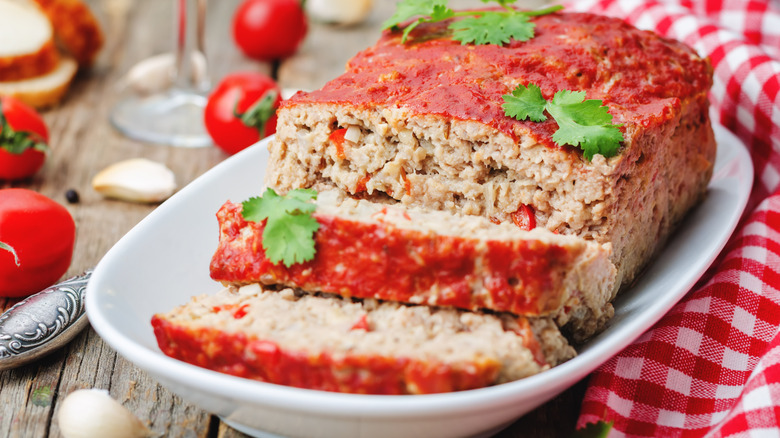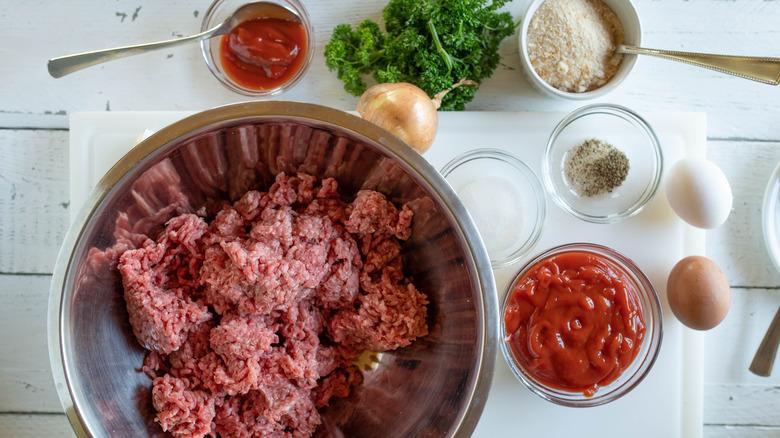Avoid One Assembly Mistake Before You Cook Meatloaf
Meatloaf is one of America's favorite dinners, and a regular go-to meal for many households. The versatility of the dish allows it to be modified in various ways, such as making it gluten-free by swapping breadcrumbs or enhancing its flavor with unique ingredients. No matter how you make your meatloaf, there's one assembly mistake you should avoid before cooking: packing the ingredients too tightly into the pan.
Mashing the mixture down too firmly crowds and condenses the ingredients, causing the loaf to steam internally in the oven. This definitely won't result in a desirable texture (unless you prefer meatloaf that's soggy on the inside). Over-condensing also requires more cooking time, which dries out the meatloaf's exterior. Instead, form the meatloaf loosely in the pan. This approach will give you a better bake overall, a nicer final texture, and that sweet-spot caramelization on the outside of your cooked loaf.
For similar reasons, you should take it easy when mixing your ingredients. Combining them by hand is a commonly used technique — it helps prevent overmixing, which can lead to the packed-in result you're trying to avoid, making the meatloaf too dense instead of giving you a nice, light bite.
Other tips for an ideal homemade meatloaf
Choosing the right baking vessel can further help you avoid a packed-too-tightly meatloaf. Instead of the traditional loaf pan typically used for bread, opt for a larger pan that provides extra space. This reduces the temptation to smoosh the mixture in to fit, and leaving some ventilation room around the edges of your meatloaf helps create a nice crustiness. You can also achieve this by using a baking sheet and shaping your loaf freestanding.
The temperature of your oven is another important factor. Aiming for between 325 and 350 degrees Fahrenheit is low enough to keep your meatloaf moist and prevent it from becoming overdone or dried out, while still being hot enough to develop a nice, glazy, crusty exterior. As long as your meat reaches the USDA-recommended safe internal temperature of 160 degrees Fahrenheit, you're good to go. A meat thermometer will help ensure this, so you're not guesstimating and risking either underbaking or overbaking the loaf.
The final touch to ensure the best results is allowing your cooked meatloaf to rest. Cutting into it straight out of the oven lets the juices run out, while letting it sit allows it to firm up and ensures even distribution of moisture and temperature. A minimum 10-minute rest period is ideal, and tenting your loaf with aluminum foil will help retain heat while it rests.


